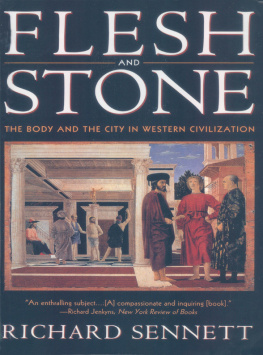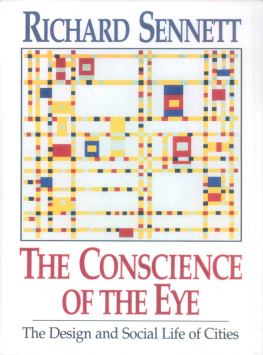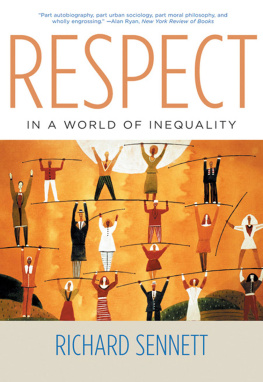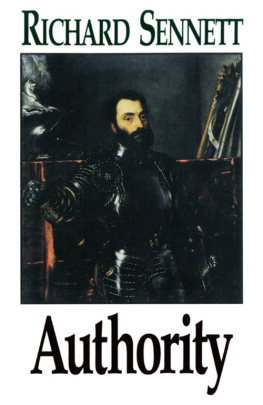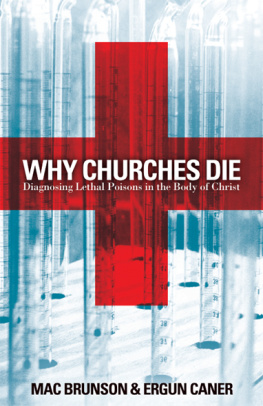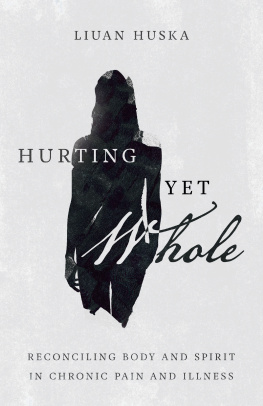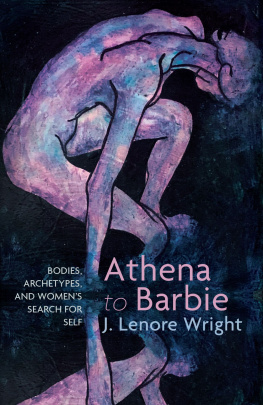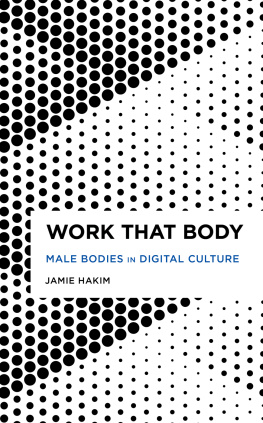FLESH AND STONE
BOOKS BY RICHARD SENNETT
THE CONSCIENCE OF THE EYE (1990)
PALAIS ROYAL (1986)
AN EVENING OF BRAHAMS (1984)
THE FROG WHO DARED TO CROAK (1982)
AUTHORITY (1980)
THE FALL OF PUBLIC MAN (1977)
THE PSYCHOLOGY OF SOCIETY (1977)
THE HIDDEN INJURIES OF CLASS (coauthor) (1972)
THE USES OF DISORDER (1970)
FAMILIES AGAINST THE CITY:
MIDDLE-CLASS HOMES OF INDUSTRIAL CHICAGO (1970)
NINETEENTH-CENTURY CITIES:
ESSAYS IN THE NEW URBAN HISTORY (coauthor) (1969)
CLASSIC ESSAYS ON THE CULTURE OF CITIES (editor) (1969)

FLESH AND STONE
The Body and the City in Western Civilization

RICHARD SENNETT

Copyright 1994 by Richard Sennett
All rights reserved
First published as a Norton paperback 1996
Grateful acknowledgment is made to Random House for permission to reprint lines from Muse des Beaux Arts, by W. H. Auden. Copyright 1976 by Random House.
The text of this book is composed in Garamond #3.
Book design by Jacques Chazaud.
Library of Congress Cataloging-in-Publication Data
Sennett, Richard, 1943
Flesh and stone : the body and the city in Western civilization / Richard Sennett.
p. cm.
Includes bibliographical references and index.
1. Cities and townsHistory. 2. Body, HumanSocial aspects.
3. Civilization, Western. I. Title.
HT113.S45 1994
307.7609dc20 94-15874
ISBN 978-0-393-34650-3 (ebook)
W. W. Norton & Company, Inc.
500 Fifth Avenue, New York, N.Y. 10110
www.wwnorton.com
W. W. Norton & Company Ltd.
Castle House, 75/76 Wells Street, London W1T 3QT
For HILARY
CONTENTS

PART TWO
MOVEMENTS OF THE HEART
PART THREE
ARTERIES AND VEINS

The first draft of Flesh and Stone was presented at the Goethe University, Frankfurt in 1992; I would like to thank my host, Professor Jurgen Habermas, for helping me think through many problems. The work on ancient cities advanced during a stay at the American Academy in Rome in 199293. I would like to thank its president, Adele Chatfield-Taylor, and its professor in charge, Malcolm Bell, for their many kindnesses. I gained access to manuscripts in the Library of Congress thanks to a stay at the Woodrow Wilson International Center for Scholars in 1993, for which I would like to thank its director, Dr. Charles Blitzer.
This book was read by several friends. Professor Glen Bowersock, of the Institute for Advanced Study, gave me a key to writing the initial chapter; Professor Norman Cantor, of New York University, helped me find a context for the chapters on medieval Paris; Professor Joseph Rykwert, of the University of Pennsylvania, took me through the architectural history minutely; Professor Carl Schorske, of Princeton University, helped me with the chapter on the Enlightenment; Professor Joan Scott, of the Institute for Advanced Study, read the entire manuscript with a compassionately skeptical eye, as did Professor Charles Tilly, of the New School for Social Research.
At W. W. Norton, Edwin Barber read this book with care and understanding, as did Ann Adelman, who copy-edited the manuscript thoroughly but with due regard to the authors vanity. The book has been designed by Jacques Chazaud and produced by Andrew Marasia.
My friends Peter Brooks and Jerrold Seigel supported me with their kindness as well as their comments; they made the process of writing less lonely, as did my wife, Saskia Sassen, an avid partner in the adventure of our life. This book is dedicated to our son, whose growth has given us the greatest pleasure during the time this book has also grown.
I owe a special debt to the students who have worked with me the last few years. Molly McGarry did research on buildings, maps, and images of the body; Joseph Femia helped me understand the workings of the guillotine, and I have based my own writing on his; Anne-Sophie Cerisola helped with French translations and with the notes. I could not have written this book without my graduate assistant David Slocum; he pursued sources with a vengeance and read the endless permutations of the manuscript with great care.
Finally, my greatest debt is to my friend Michel Foucault, with whom I began investigating the history of the body fifteen years ago. After his death, I put the beginnings of a manuscript aside, taking up this work some years later in a different spirit. Flesh and Stone is not, I think, a book the younger Foucault would have liked; for reasons I have explained in the Introduction, it was Foucaults own last years which suggested to me another way of writing this history.
A city is composed of different kinds of men; similar people cannot bring a city into existence.
ARISTOTLE, The Politics

F lesh and Stone is a history of the city told through peoples bodily experience: how women and men moved, what they saw and heard, the smells that assailed their noses, where they ate, how they dressed, when they bathed, how they made love in cities from ancient Athens to modern New York. Though this book takes peoples bodies as a way to understand the past, it is more than an historical catalogue of physical sensations in urban space. Western civilization has had persistent trouble in honoring the dignity of the body and diversity of human bodies; I have sought to understand how these body-troubles have been expressed in architecture, in urban design, and in planning practice.
I was prompted to write this history out of bafflement with a contemporary problem: the sensory deprivation which seems to curse most modern building; the dullness, the monotony, and the tactile sterility which afflicts the urban environment. This sensory deprivation is all the more remarkable because modern times have so privileged the sensations of the body and the freedom of physical life. When I first began to explore sensory deprivation in space, the problem seemed a professional failuremodern architects and urbanists having somehow lost an active connection to the human body in their designs. In time I came to see that the problem of sensory deprivation in space has larger causes and deeper historical origins.
Some years ago a friend and I went to see a film in a suburban shopping mall near New York. During the Vietnam War a bullet had shattered my friends left hand, and the military surgeons had been obliged to amputate above the wrist. Now he wore a mechanical device fitted with metal fingers and thumb which allowed him to hold cutlery and to type. The movie we saw turned out to be a particularly gory war epic through which my friend sat impassively, occasionally offering technical comments. When it was over, we lingered outside, smoking, while waiting for some other people to join us. My friend lit his cigarette slowly; he then held up the cigarette in his claw to his lips steadily, almost proudly. The movie patrons had just sat through two hours of bodies blasted and ripped, the audience applauding particularly good hits and otherwise thoroughly enjoying the gore. People streamed out around us, glanced uneasily at the metal prosthesis, and moved away; soon we were an island in their midst.
Next page
